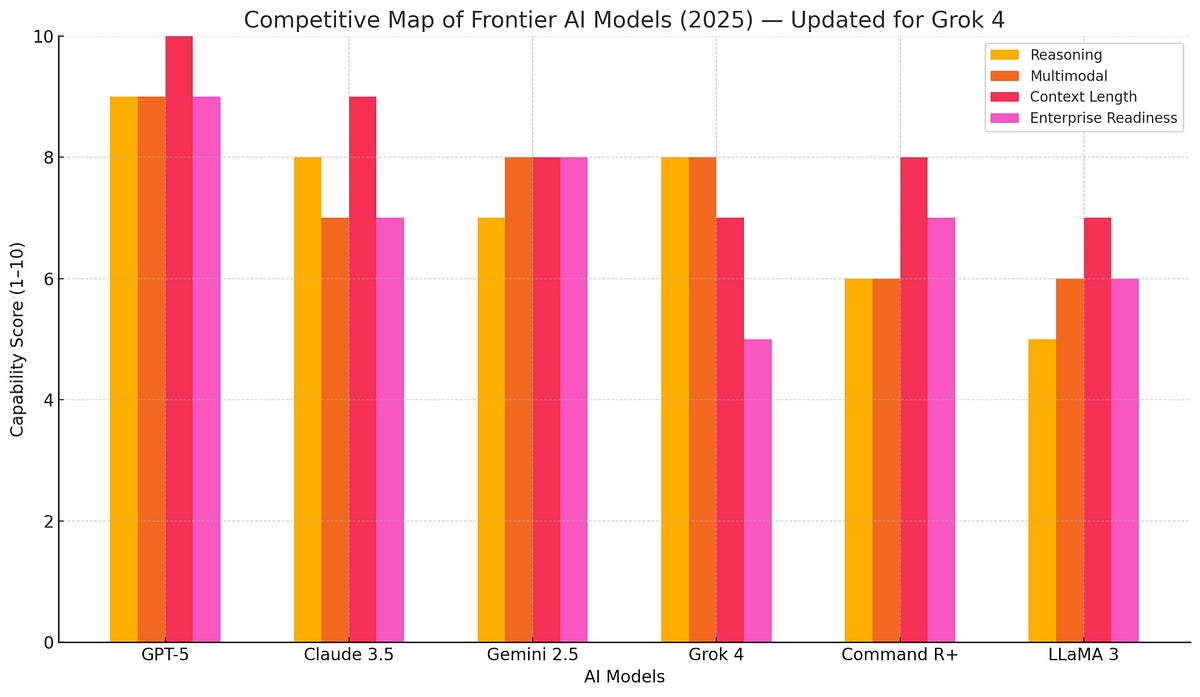Programming News
Dev
61

Image Credit: Dev
How I Built a Smart Translation App Using Azure AI (And You Can Too)
- Azure AI Translator service helps create apps translating text between languages.
- Provision Azure AI Translator resource on Azure portal with specified settings.
- Clone GitHub repo, configure app, add translation code, and test the application.
- Integrate Azure AI Translator functionality in C# app to translate text efficiently.
- Run the app, choose target language, input text, and test translation capabilities.
Read Full Article
2 Likes
Medium
254

Image Credit: Medium
Prolog: Function Discovery
- A programmer shares their experience exploring the use of Prolog to solve mathematical equations.
- The program can answer questions like 'Does a cat eat meat?' or 'What does a cat eat?'
- Using a simple prototype, the programmer worked with Dr. Calude to address challenges in solving mathematical equations using Prolog.
- They developed rules for mathematical operators and successfully implemented the solution with AI assistance, making the exploration of complex ideas easier.
Read Full Article
15 Likes
Medium
180

Image Credit: Medium
GPT‑5: Unified Intelligence, Unmatched Potential
- GPT-5 has been compared to other AI models in terms of reasoning, multimodal capabilities, context length, and enterprise readiness, standing out in reasoning and enterprise deployment potential.
- Key features of GPT-5 include chain-of-thought reasoning, long-context memory, multimodality, and agentic behavior to work as part of AI agents completing tasks.
- GPT-5 is expected to be released in late 2025 with upgrades in power, price, and performance, providing major gains in various tasks like coding, math, multilingual reasoning, and more.
- GPT-5 is seen as a platform shift, shifting from typing to thinking and prompting to collaborating, with implications for developers, businesses, and users, expected to define the next generation of AI-native tools.
Read Full Article
10 Likes
Medium
312

Image Credit: Medium
Chat with your documents tool — RAG (vector DBs + cosine sim.) & Claude API implementation
- Implementing RAG system with vector DBs and cosine similarity for law firm.
- Solution handles massive confidential data with privacy and hallucinations challenges efficiently.
- RAG system splits scanned briefs, uses local FAISS index, and feeds context to Claude for precise answers.
- Architecture ensures compliance, privacy, factual replies with low latency and cost for law firm.
Read Full Article
18 Likes
Discover more
- Software News
- Web Design
- Devops News
- Open Source News
- Databases
- Cloud News
- Product Management News
- Operating Systems News
- Agile Methodology News
- Computer Engineering
- Startup News
- Cryptocurrency News
- Technology News
- Blockchain News
- Data Science News
- AR News
- Apple News
- Cyber Security News
- Leadership News
- Gaming News
- Automobiles News
Dev
205

Image Credit: Dev
Programming Entry Level: examples inheritance
- Inheritance in programming is like how a puppy is to a dog.
- It lets you create new classes based on existing ones.
- Inheritance saves time, organizes code, and is fundamental for larger programs.
- Common mistakes include not calling parent class's constructor and using inheritance inappropriately.
Read Full Article
12 Likes
Dev
102

Image Credit: Dev
Introducing AGAI
- AGAI is a minimal, model-driven web framework in Go designed to offer structure, speed, and control for building web apps.
- Key features include model-driven design, multi-style templates, a component system, disk-based session storage, and a clean CLI.
- The framework aims to provide a clean project layout, routing style, and support for componentized, reusable data.
- The developer behind AGAI seeks feedback on the framework and invites users to share their thoughts for improvements.
Read Full Article
6 Likes
Dev
341

Image Credit: Dev
BREAKING: Free AI API Keys 2025: 3 Secret Platforms Replacing Paid Services
- The article discusses three platforms that offer access to powerful AI tools for free without the need for credit card information.
- Google AI Studio provides users with an API key that works with top-tier models like Gemini 2.5, allowing for testing ideas, building prototypes, and launching small-scale apps without rate limits or surprise billing.
- OpenRouter offers access to 50+ AI models, simplifying the process by allowing users to manage multiple models under one account, making it ideal for experimentation and variety.
- Groq focuses on speed, providing lightning-fast inference for smaller AI models like Llama, Mistral, and DeepSeek, making it suitable for real-time applications requiring low-latency responses.
Read Full Article
18 Likes
Dev
370

Image Credit: Dev
Claude Keeps Forgetting Stuff. So I Built This…
- Context Forge is a CLI toolkit designed to address context loss in AI-assisted development tools like Claude, by helping structure, version, and reinject scoped context into workflows.
- It creates a CLAUDE.md file to define coding standards and style guides, scaffolds PRP files, and integrates with Claude Code's preCompact hook to support reinjection of context across various AI IDEs.
- The tool aims to save time by enabling AI to think more like a development partner and less like a forgetful assistant, thus improving efficiency in AI-powered development workflows.
- The article qualifies for web story generation due to its focus on a new CLI tool, its relevance to AI-assisted development, and potential interest for developers seeking solutions for context management in their workflows.
Read Full Article
22 Likes
Dev
74

Image Credit: Dev
Mastering the LWC Lifecycle with a Live-Refreshing Contact Table
- Mastering the LWC Lifecycle with a Live-Refreshing Contact Table in the Salesforce ecosystem involves understanding the Lightning Web Component lifecycle for writing clean, responsive, and performant components.
- Key Lifecycle Hooks used include constructor(), connectedCallback(), renderedCallback(), @wire for reactive data fetching, refreshApex() for data re-fetch, and disconnectedCallback() for cleanup.
- The Contact Table Component in the code example fetches data via @wire, renders conditionally with isLoading, and automatically refreshes when Contact records are added or changed.
- The article provides a code walkthrough for the Contact Table Component, showcasing JavaScript code for handling data retrieval and display, HTML template for rendering the table UI, and an Apex controller for fetching Contact records.
Read Full Article
4 Likes
Medium
113

Image Credit: Medium
The Death of Original Thought:
- AI tools are increasingly taking over the burden of ideation in various fields.
- This shift towards relying on AI for creativity is leading to a dangerous trend of outsourcing agency and reducing the need to wrestle with ambiguity.
- The cycle of using AI to create content based on existing output is resulting in a loop of recycled ideas, hindering true innovation and fostering intellectual dependency.
- The situation poses a risk of collective intellectual surrender as humans become accustomed to not having to think critically due to the convenience of AI.
Read Full Article
6 Likes
Dev
331

Image Credit: Dev
🧠 Build or Use a Free Dream Interpreter Powered by AI – No Login Required!
- A free Dream Interpreter Tool powered by AI has been introduced by HTML5x.com, incorporating AI, psychology, and ancient wisdom for dream analysis without the need for login or downloads.
- The tool uses NLP, a curated database of symbols from Islamic dream interpretation and Western psychology, as well as common AI symbolism models with multilingual AI integration for a global audience.
- Developers can find this tool relevant for AI and human symbolism applications, minimalistic user experience design, and multilingual support using AI translation APIs in production.
- The Dream Interpreter Tool offers features like instant results, multilingual support, mobile and desktop compatibility, and integration of psychological and religious dream meanings.
Read Full Article
18 Likes
Dev
127

Image Credit: Dev
Advanced C# Testing: Property-Based Testing and Mutation Testing
- Advanced C# testing goes beyond unit tests to explore property-based and mutation testing.
- Property-based testing focuses on general code properties, while mutation testing measures test suite effectiveness.
- FsCheck is used for property-based testing, while Stryker.NET is recommended for mutation testing.
- These advanced testing techniques help in writing robust tests and improving code quality.
Read Full Article
7 Likes
Dev
300

Image Credit: Dev
Why HikariCP Throws Timeout & How to Fix It
- HikariCP can throw SQLTransientConnectionException when connections are not available due to long-running non-database logic holding the connection.
- The core problem leading to timeouts in HikariCP is when all connections are in use and new queries are queued, causing exceptions when connections are not freed within the timeout window.
- A recommended pattern to avoid HikariCP timeouts is to keep non-database work outside the DB connection scope, ensuring connections are released promptly.
- Real-world impact includes cascading failures in high-concurrency systems due to delays in returning connections, emphasizing the need to configure pool size and timeouts appropriately.
Read Full Article
18 Likes
Dev
263

Image Credit: Dev
From Pain Point to Public Package: A Developer's Guide to Publishing on NPM
- Guide on publishing NPM packages from idea to live on NPM registry.
- Example of creating just-color-it library emphasizing minimalist approach for package creation.
- Steps include setting up project, writing code, crafting README, and publishing.
- Importance of focused solutions to solve common problems efficiently for developer community.
Read Full Article
15 Likes
Medium
483

The AI Ouroboros: Will AI-Generated Code Ever Hit a Wall?
- AI-driven code generation tools like GitHub Copilot are already enhancing developer productivity by suggesting code snippets and completing functions.
- As AI becomes more prominent in coding tasks, human developers will likely focus on higher-level design, system integration, and ensuring interoperability between AI-generated components.
- There is a concern about the 'AI Ouroboros' problem, where AI models trained on data generated by AI may lead to challenges in code quality and innovation.
- Researchers and developers are actively working on strategies to address challenges posed by AI-generated code and ensure its positive evolution in the coding ecosystem.
Read Full Article
16 Likes
For uninterrupted reading, download the app